Equipment
Why AimPoint Will Save Your Putting: A Basic Introduction

Over the last 10 years, golf has changed dramatically and there is a constant push for technology. For years, club companies have made a push for more distance to create the “longest club ever.” What many golfers forget to realize is that about 30 percent of all strokes will occur on the putting green, so why isn’t there technology for sinking more putts? Well, there is and it’s changing the way players of all skill levels learn to read greens.
About six years ago, Mark Sweeney developed a system “which can accurately predict optimum putting parameters and putt trajectories from any point on a green to any other point.” In layman’s terms: He developed a way to give you the correct read of any putt from anywhere on a putting green. I was skeptical at first but having a background as a civil engineer piqued my interest.
AimPoint is similar to a science experiment. The more variables you have in an experiment, the more your results tend to vary; the fewer the variables, the more precise the results. AimPoint strives to isolate each variable that occurs on a putting green and the golfer basically plugs them into an AimPoint chart.
Let me elaborate, for this example a golfer hits an approach shot to 15 feet and is getting ready to read the break of his simple one plane putt. Most of the time, golfers are playing a guessing game based off of past experiences and there is no methodology to how much the putt will break. With AimPoint, the same golfer will now answer a few quick questions to systematically determine the break of the putt and it’s surprisingly easy.
1.) What is the length of the putt?
- This is generally simple and can be your best estimation of how long your putt is.
2.) What is the slope of the putt?
- This one is a bit tricky and will take a little practice. The severity of slope on any putt is generally between 1 and 4 percent. In my time using AimPoint, I’ve observed most of my putts are about 2 percent and rarely get to 4 percent. Getting yourself a digital level can help you hone this skill further.
3.) What angle is the putt to the slope?
- You don’t need to be an engineer to solve this equation but this does take a bit of practice. Essentially if you were to draw a line from your ball to the hole, and then lay your club down in the same direction of the break, the two lines intersect. What is the angle between the two.
4.) What is the stimp (speed) of the green?
- Some courses post their current green speed for the day but it’s always best to estimate your own stimp.
That’s it. Once you have all the information the only variable left is referred to as capture speed. All AimPoint calculations assume your putt will lay to rest about six to nine inches past the hole on every putt. You take this information, plug it into your “AimChart” and you have your read.
At first it might seem daunting to roll through all these variables but with practice you or your regular caddie will become very proficient in gathering all the information in less than 30 seconds.
So why waste another $400 on a driver that is the “longest ever” and spend a few dollars on learning a new skill that will revolutionize the way you read the putting green. If you don’t believe me, feel free to ask PGA Tour Pro Justin Rose (whose putting performance at the Ryder Cup sparked a historic comeback) or LPGA Tour Pro Stacey Lewis (who has won four tournaments in 2012 and LPGA Player of the Year), or any of the over 60 Tour pros who are currently “Aimpoint-ing.”
- LIKE113
- LEGIT17
- WOW22
- LOL8
- IDHT5
- FLOP9
- OB9
- SHANK27
Whats in the Bag
Cameron Young WITB 2024 (March)

- Cameron Young WITB accurate as of the Valspar Championship.
Driver: Titleist TSR3 (9 degrees)
Shaft: Accra Tour Z5 65 M5
2-wood: Titleist TSR 2W Prototype (13 degrees)
Shaft: Mitsubishi Tensei 1K White 80 TX

Irons: Titleist T200 (3), Titleist T100 (4-5), Titleist 631.CY Prototype (6-9)
Shafts: MMT Utility 105 TX (3), True Temper Dynamic Gold X7 (4-9)

Wedges: Titleist Vokey Design SM10 (48-10F, 52-12F, 58-08M, 60-04T @62)
Shafts: True Temper Dynamic Gold X7
Putter: Scotty Cameron Phantom 5.5 Tour Prototype
Grips: Golf Pride Tour Velvet Align
Ball: Titleist Pro V1 Left Dot
- LIKE0
- LEGIT0
- WOW0
- LOL0
- IDHT0
- FLOP0
- OB0
- SHANK0
Equipment
Best hybrids 2024: Expert fitters recommend the hybrids for your game

At GolfWRX, we believe the best hybrid for your game is going to be the one that gives you the greatest opportunity to both score and save shots during your round of golf.
In 2024, we have seen a continued expansion of hybrid options from every manufacturer with models designed to fit golfers of all skill levels and clubhead speeds. Some manufacturers offer models all the way down to 8-iron-replacement lofts.

That being said, ultimately the best way to find the best hybrid or hybrids for you is to work with a professional fitter using a launch monitor and gap them accordingly. The difficult part is a lot of people don’t have easy access to fitters, launch monitors, and club builders — so at GolfWRX, we have done a lot of the work for you.
We want to give you the tools and information to go out and find what works best for you, and we’re offering recommendations based on exactly what you need from your hybrids.
We have again broken our 2024 best hybrid list into two categories.
- Best hybrid for golfers seeking forgiveness
- Best hybrid for golfers seeking versatility
We reached out to our trusted fitters to discuss how they sort through the hybrid club options available to golfers. Forgiveness and versatility were the highest-ranked choices.
Most versatile hybrids of 2024

Titleist TSR2

“Forgiving speed and performance,” is the branding for the TSR2. TSR2 hybrids remain slightly longer with a classical shape. Center of gravity is lower and deeper in the TSR2 for higher launch and maximum forgiveness.
For more information, check out our launch piece.
Ping G430

In all of the G430 fairway woods and hybrids, Ping developed Carbonfly Wrap in a bid to deliver more distance by positioning the CG closer to the face line in design to maximize ball speed, resulting in higher, longer carries. The lightweight composite crown wraps into the heel and toe sections of the skirt, creating weight savings of 10 grams, which are reallocated to achieve a lower CG and increase ball speed.
For more information, check out our launch piece.
Callaway Paradym Ai Smoke

Leveraging the company’s new Ai Smart Face, Callaway’s Paradym Ai Smoke hybrid has been reshaped and features a larger profile for greater forgiveness and a refined sole camber for better turf interaction. The Tungsten Speed Cartridge is positioned in the front of the club for lower spin and ease of launch.
For more information, check out our launch piece.
TaylorMade Qi10 Rescue

The Qi10 Rescue is designed with an all-new Carbon Crown that helps free up weight for improved weight distribution in the heads. The club has split internal weighting to achieve more distance and a higher launch.
For more information, check out our launch piece.
TaylorMade Qi10 Tour Rescue

The Qi10 Tour Rescue model features a C300 face with a more compact look and a higher-toe design. It’s designed for better players who seek to combine distance and control with iron-like turf interaction, workability, and precision.
For more information, check out our launch piece.
Most forgiving hybrids of 2024

TaylorMade Qi10 Max Rescue

Qi10 Max Rescue clubs are designed with all-new Carbon Crowns that help free up weight for improved weight distribution in the heads. The Qi10 Max has an ultra-low CG (center of gravity) and a shallow face height for even higher launch and greater forgiveness.
For more information, check out our launch piece.
Callaway Paradym Ai Smoke HL

Designed for players with moderate to average swing speeds who are looking to hit the ball higher to maximize carry distance, the Paradym Ai Smoke HL leverages the company’s new Ai Smart Face. It features a larger profile for greater forgiveness and a refined sole camber for better turf interaction. The Tungsten Speed Cartridge is positioned in the front of the club for lower spin and ease of launch.
For more information, check out our launch piece.
Ping G430

In all of the G430 fairway woods and hybrids, Ping developed Carbonfly Wrap in a bid to deliver more distance by positioning the CG closer to the face line in design to maximize ball speed, resulting in higher, longer carries. The lightweight composite crown wraps into the heel and toe sections of the skirt, creating weight savings of 10 grams, which are reallocated to achieve a lower CG and increase ball speed.
For more information, check out our launch piece.
Callaway Paradym Ai Smoke Max Fast

The Callaway Paradym Ai Smoke Max Fast is designed for moderate-swing-speed players. In addition to Ai Smart Face, Max Fast features a larger profile for greater forgiveness and a refined sole camber for better turf interaction. The Tungsten Speed Cartridge is positioned in the front of the club for lower spin and ease of launch.
For more information, check out our launch piece.
Titleist TSR1

Titleist’s new TSR1 hybrids are built with a larger, “wood-like” size to help golfers find more speed and forgiveness. They’re also built 0.5 inches longer than standard to provide additional assistance in creating speed.
For more information, check out our launch piece.
Best hybrid of 2024: Meet the fitters
- Adam Rathe: Club Champion
- Adam Scotto: Club Champion
- Adam Seitz: Club Champion
- Aidan Mena: Club Champion
- Alex Dice: Carl’s Golfland
- Alex Praeger: Club Champion
- Ben Giunta: The Tour Van
- Blake Smith, PGA: True Spec
- Bo Gorman: True Spec
- Brad Coffield: Carl’s Golfland
- Brett Ott: Club Champion
- Brian Riley: Club Champion
- Cameron Scudder: Club Champion
- Carmen Corvino: True Spec
- Christian Sandler: Club Champion
- Clare Cornelius: Cool Clubs
- Dan Palmisano: Club Champion
- Dane Byers: Club Champion
- Darren Joubert: Club Champion
- Dennis Huggins: Club Champion
- Drew Koch: Club Champion
- Eric Touchet: Touchet Performance Golf
- Erik Gonzales: Club Champion
- Evan Morrison: Club Champion
- Gus Alzate: True Spec
- Jake Medlen: Stripe Show Club Fitters
- Jake Woolston: Club Champion
- Jake Wynd: Club Champion
- Jay Marino: Club Champion
- Jeremy Olsen: Club Champion
- Jim Yenser: Club Champion
- Joe Stefan: Club Champion
- Joey Simon, PGA: Club Champion
- Jonathan Kaye: Club Champion
- Jordan Patrick: True Spec
- Jordan Rollins: Club Champion
- Kevin Arabejo: Club Champion
- Kevin Downey: Club Champion
- Kirk Oguri: Pete’s Golf
- Kyle Lane: Club Champion
- Kyle Murao: Club Champion
- Marc Roybal: True Spec
- Mark Hymerling: Club Champion
- Mark Knapp: Carl’s Golfland
- Matt Miller: Club Champion
- Matt Rish: Club Champion
- Matthew Gandolfi: Club Champion
- Mike Martysiewicz: Club Champion
- Mike Weis: Club Champion
- Mitch Schneider: Club Champion
- Nicholas Barone: Club Champion
- Nick Sherburne: Club Champion
- Nick Waterworth: Haggin Oaks
- Preston Vanderfinch: Club Champion
- Rick Lane: Club Champion
- Rob Anderson, PGA: Club Champion
- Russell Hubby: Club Champion
- Ryan Fisher: Grips Golf
- Ryan Grimes: Club Champion
- Ryan Johnson: Carl’s Golfland Bloomfield Hills
- Sam Kim: True Spec
- Scott Sikorski: Club Champion
- Scott Felix: Felix Club Works
- Scott Trent: Club Champion
- Sean Pfeil: Club Champion
- Shaun Fagan: True Spec
- Steve Harrow: Club Champion
- Tad Artrip: Club Champion
- Thomas Mattaini: Pull the Pin
- Tony Rhode: True Clubs
- William Buse: Club Champion
- William Cho: NovoGolf
- William Fields: Club Champion
Conclusion
The fitters consulted for this piece have accumulated data from thousands of fittings with golfers just like you. From beginners to tour players, their feedback and information can’t be undervalued.
Join the discussion about the best hybrids of 2024 in the forums.
- RELATED: Best driver 2024: Most forgiving driver
- RELATED: Best driver 2024: Expert club fitters recommend the best driver for your swing speed
- RELATED: Best fairway woods of 2024: Expert club fitters recommend the most versatile and forgiving options
- LIKE5
- LEGIT1
- WOW0
- LOL0
- IDHT0
- FLOP0
- OB0
- SHANK0
Whats in the Bag
Nelly Korda WITB 2024 (March)
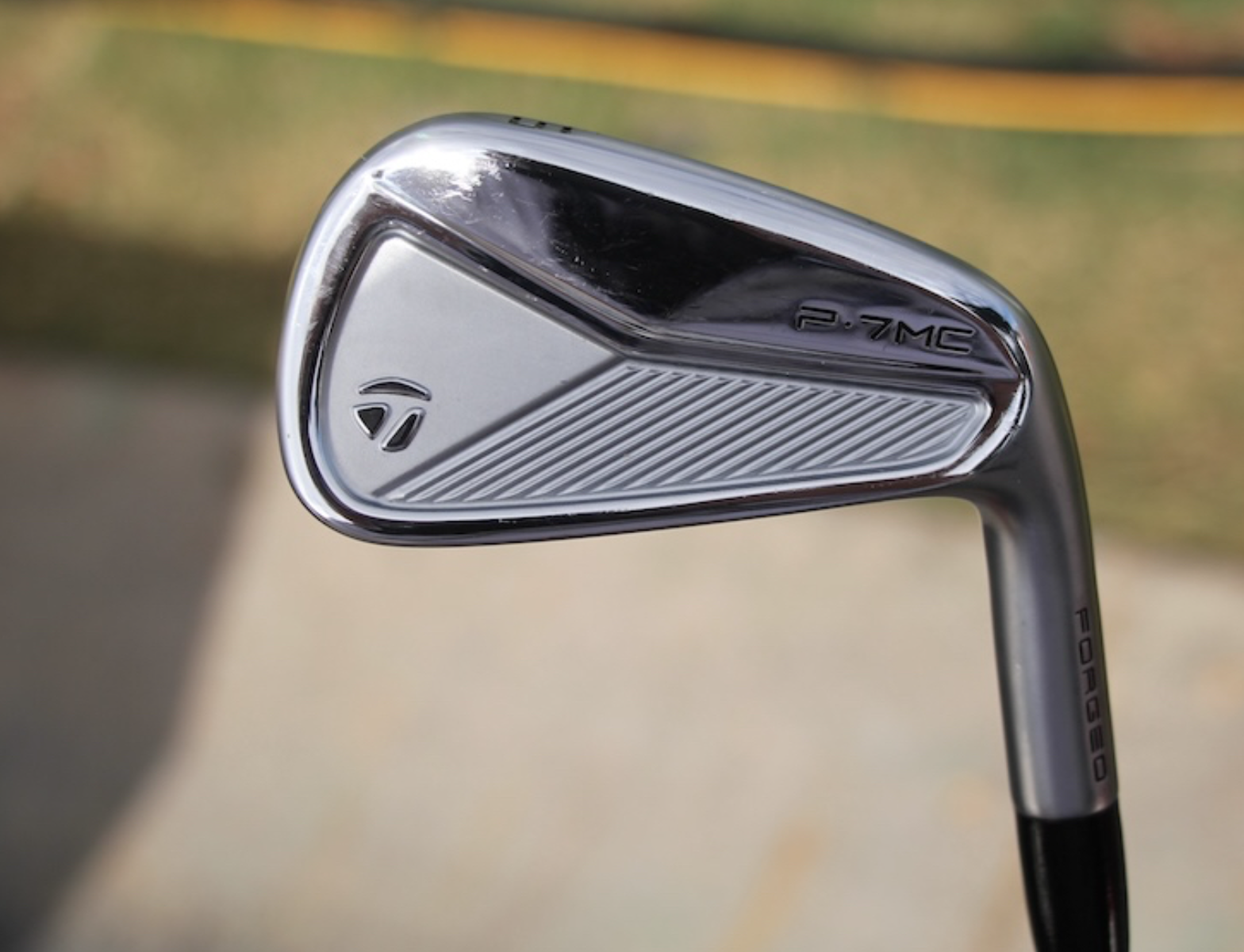
- Nelly Korda’s WITB accurate as of her win at the Fir Hills Seri Pak Championship.
Driver: TaylorMade Qi10 Max (10.5 degrees)
Shaft: Mitsubishi Diamana GT 60 S
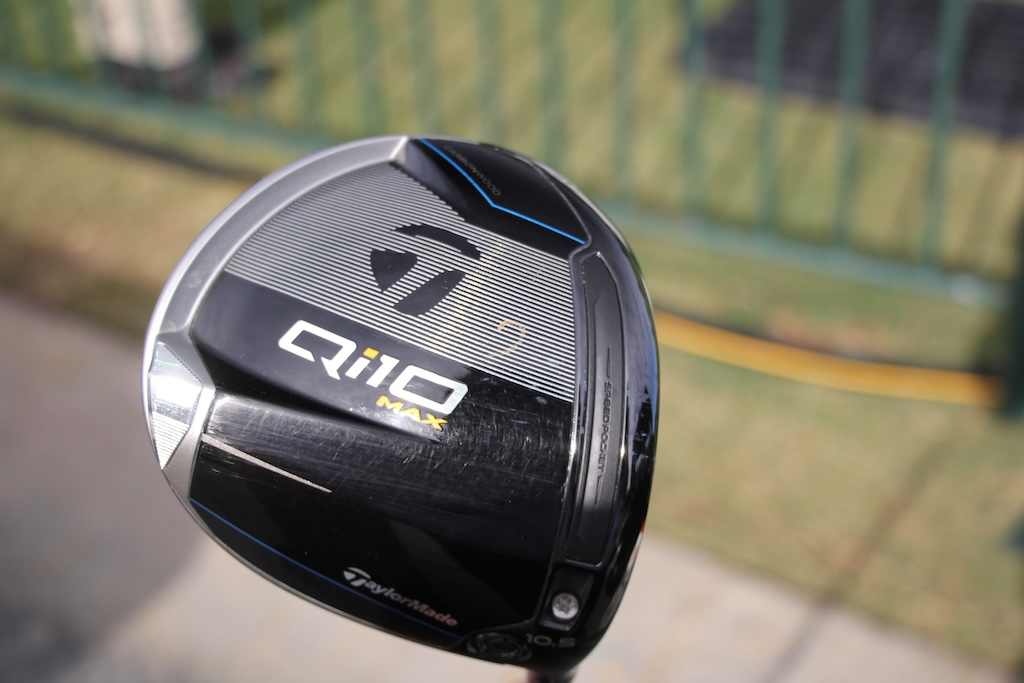
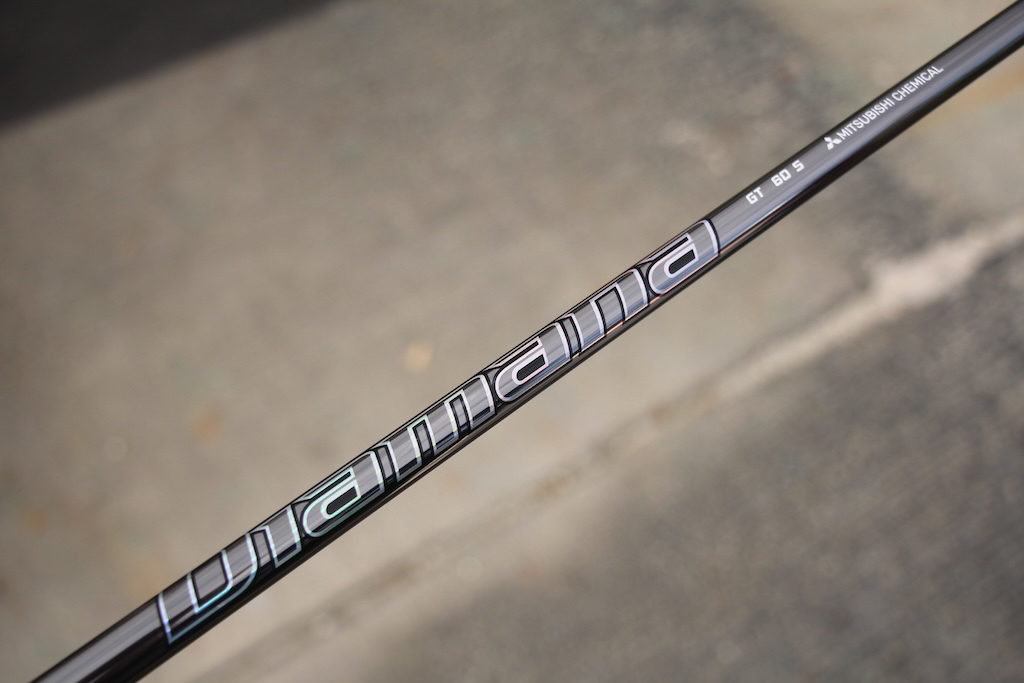
3-wood: TaylorMade Stealth 2 (15 degrees)
Shaft: Fujikura Ventus Red 7 S

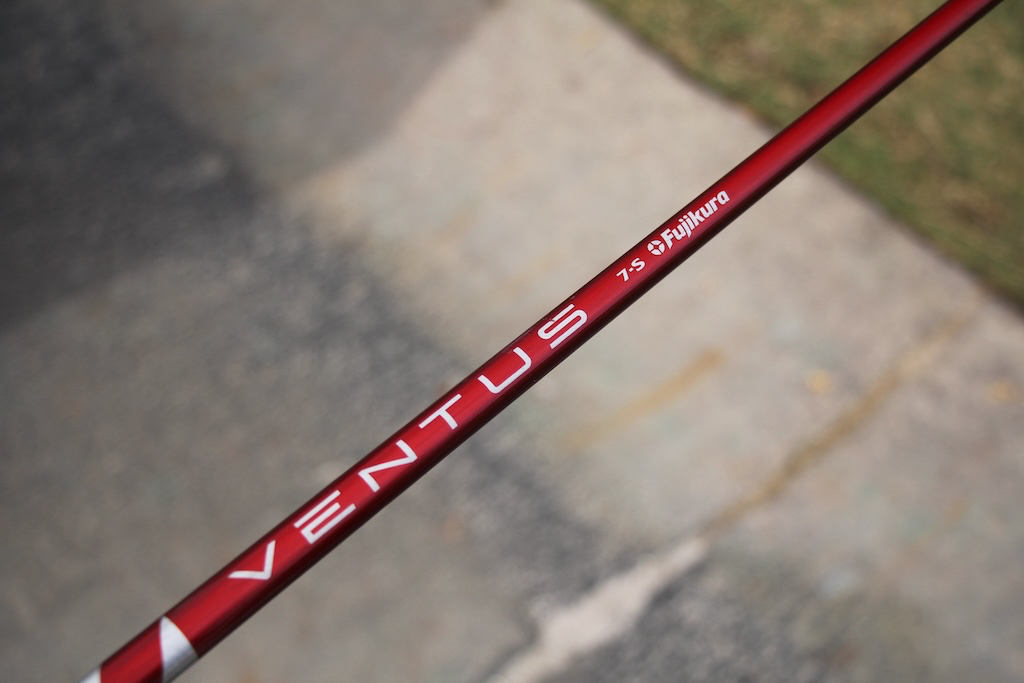
5-wood: TaylorMade Stealth 2 (21 degrees)
Shaft: Fujikura Ventus Black 7 S

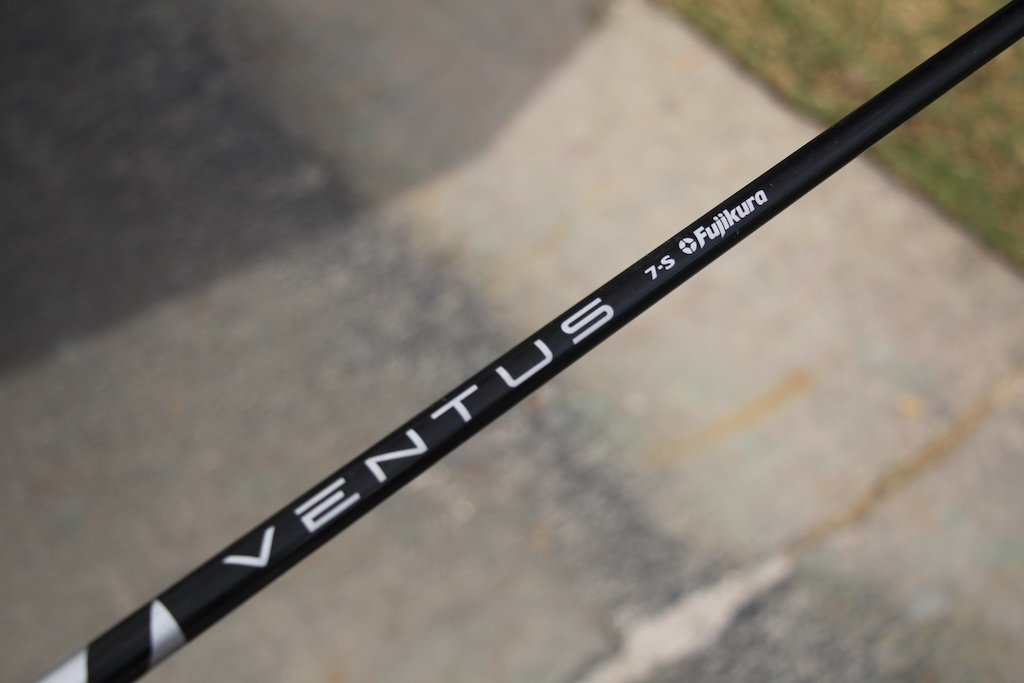
Hybrid: Ping G425 (26 degrees)
Shaft: Fujikura Ventus Blue HB 7 S
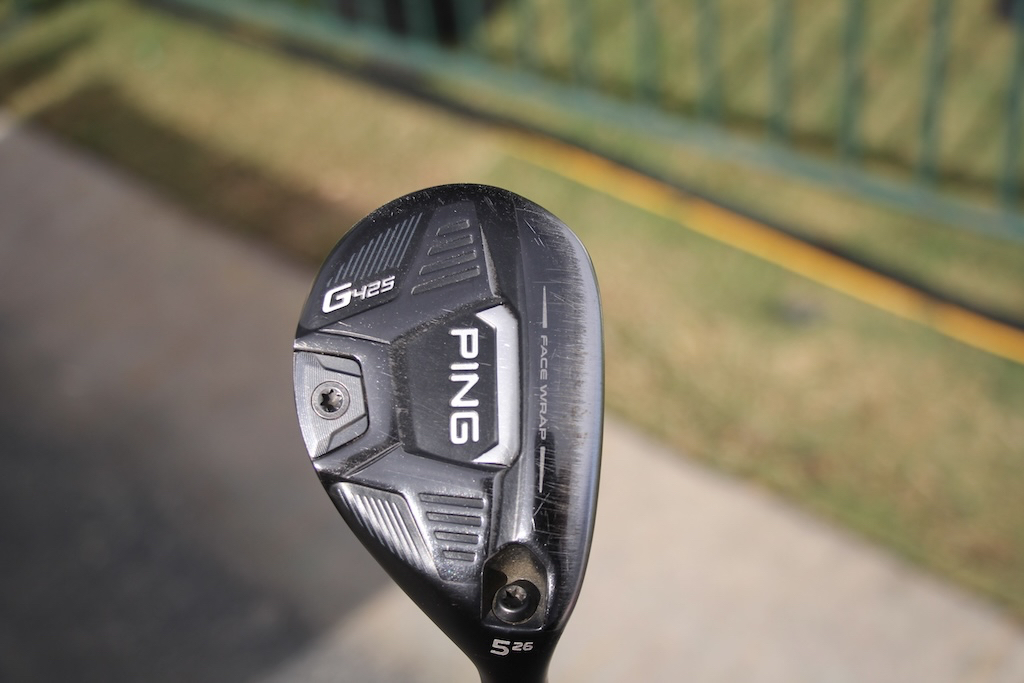
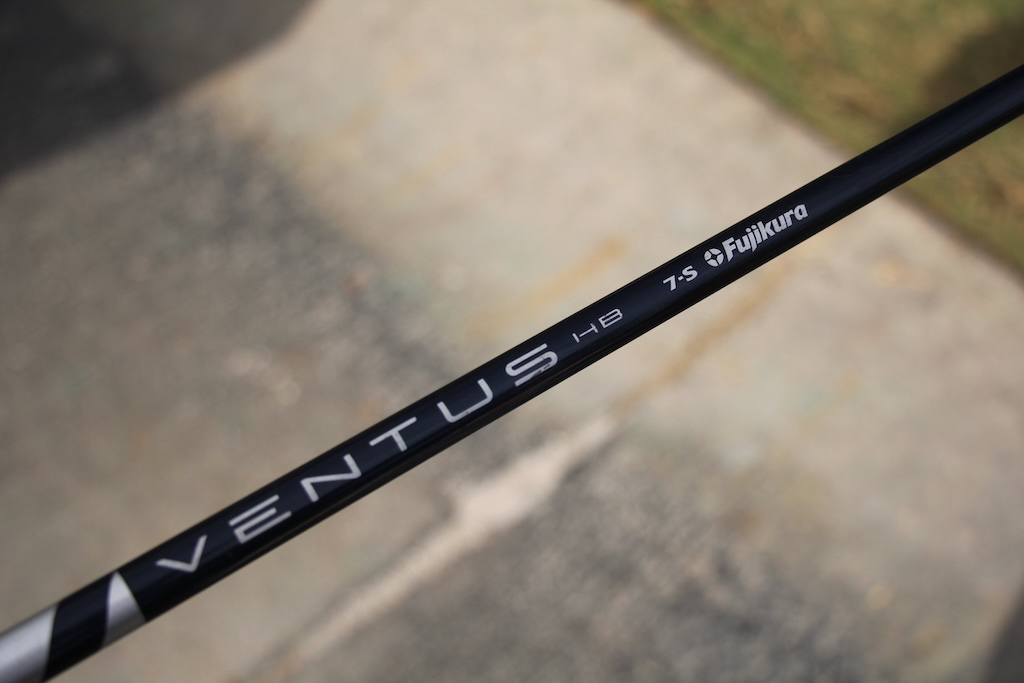
Irons: TaylorMade P770 (5), TaylorMade P7MC (6-PW)
Shafts: AeroTech SteelFiber i80 cw

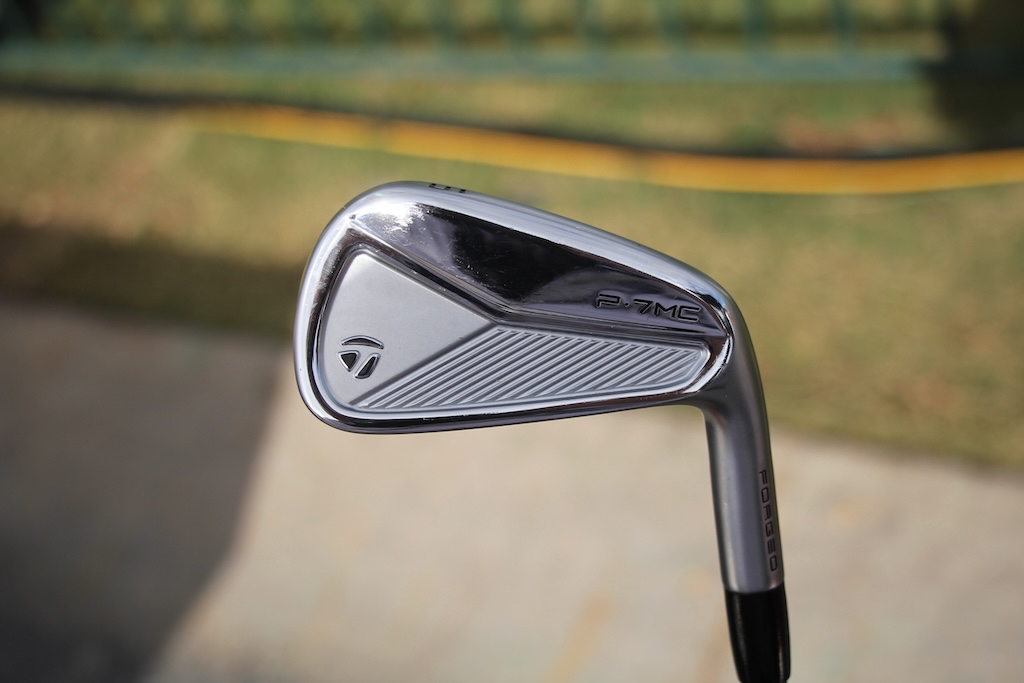
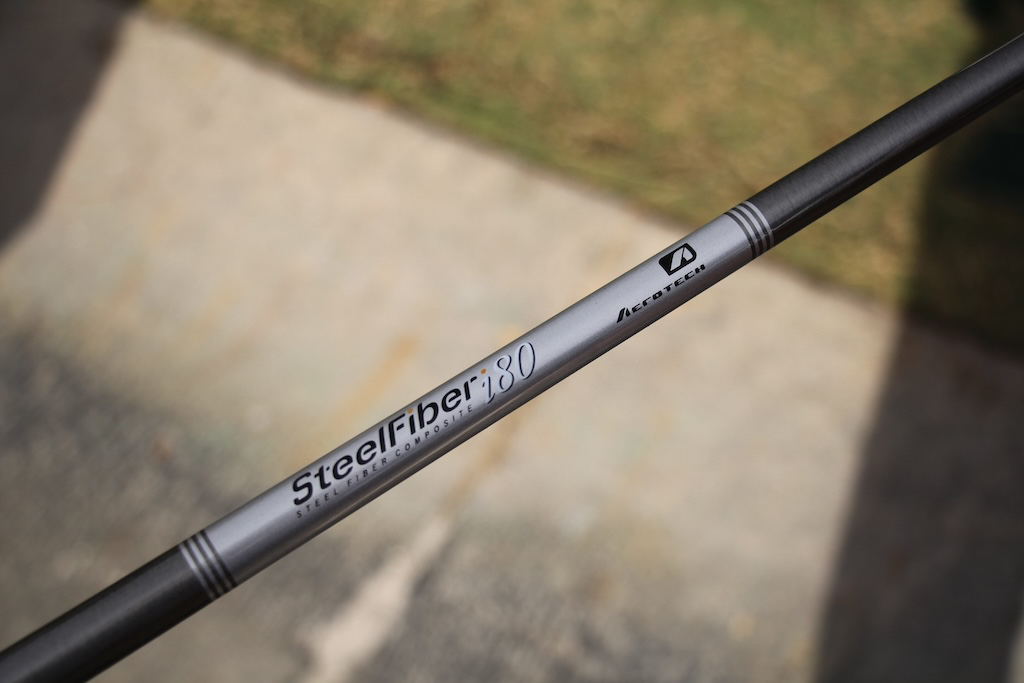
Wedges: TaylorMade MG4 (50-09SB, 54-SB), Vokey Design WedgeWorks (58-T)
Shafts: AeroTech SteelFiber i95 cw
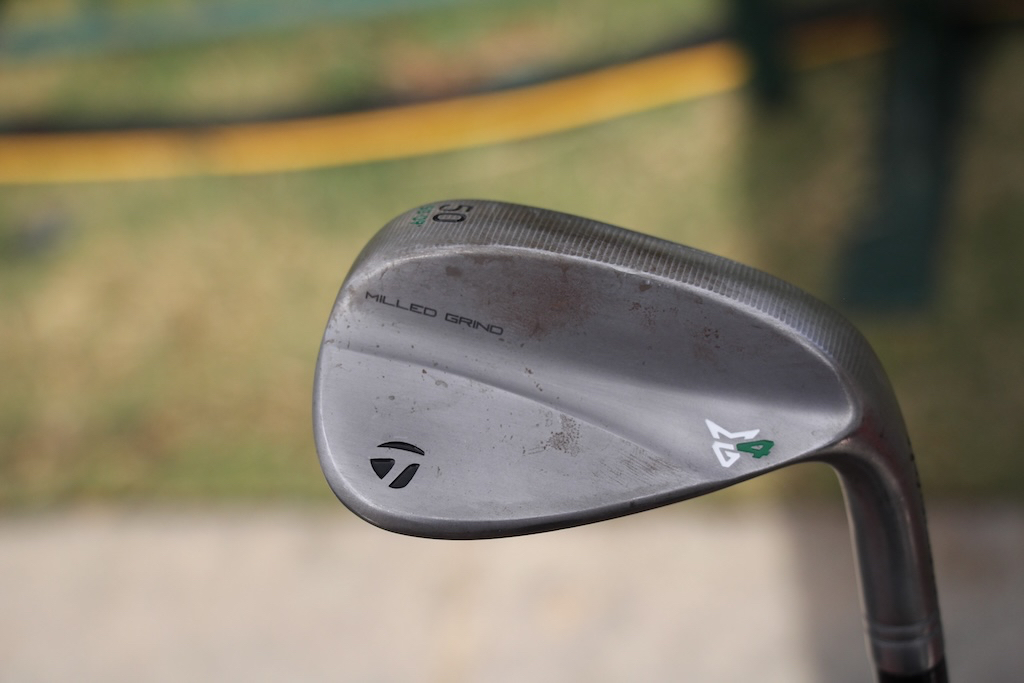
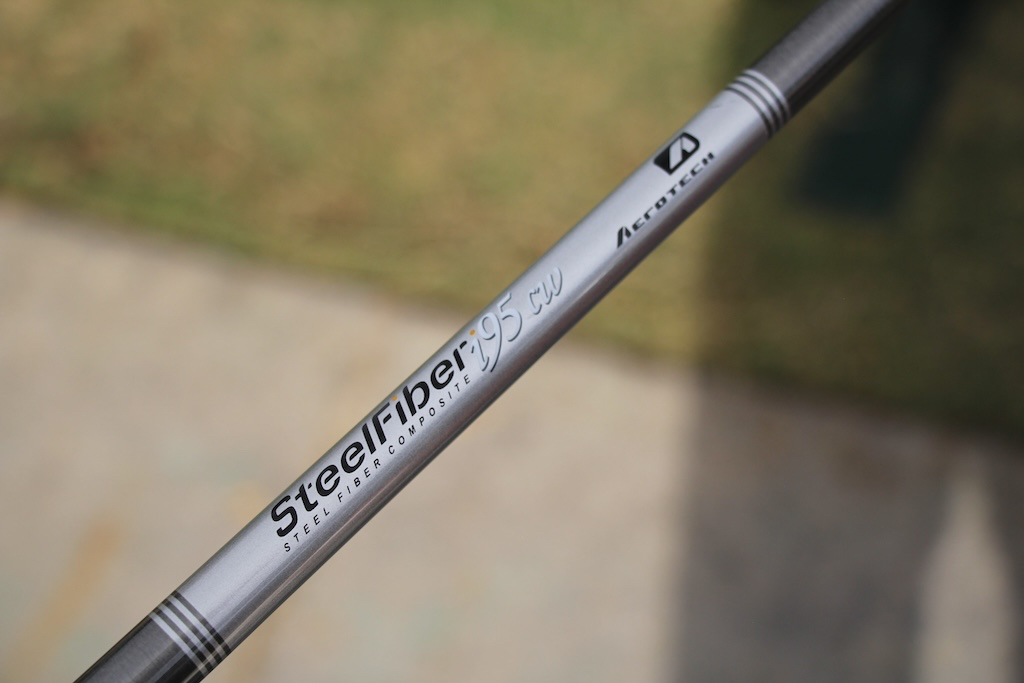
Putter: Scotty Cameron Special Select Squareback 2 Prototype
Grips: Golf Pride Tour Velvet
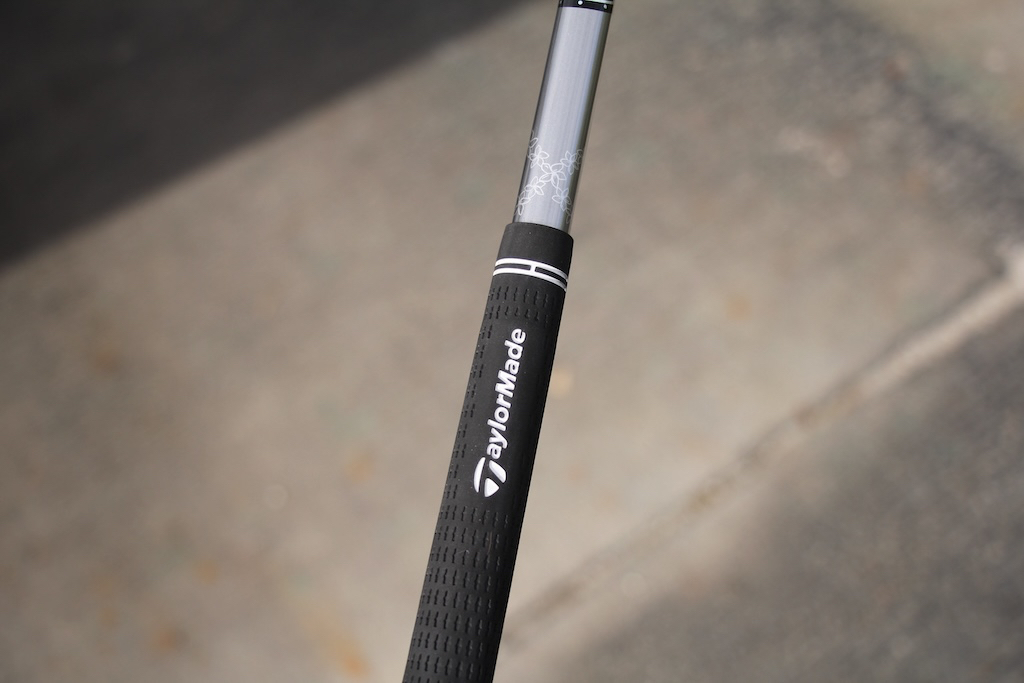
Ball: TaylorMade TP5x
- LIKE6
- LEGIT1
- WOW1
- LOL1
- IDHT1
- FLOP0
- OB0
- SHANK0
-
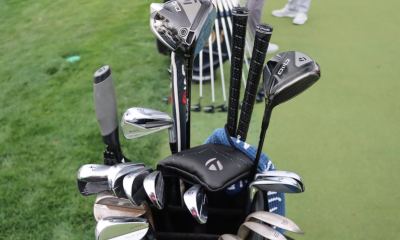
 Whats in the Bag3 weeks ago
Whats in the Bag3 weeks agoScottie Scheffler WITB 2024 (March)
-

 19th Hole3 weeks ago
19th Hole3 weeks agoPaulina Gretzky opens up on receiving death threats following DJ’s move to LIV Golf
-

 19th Hole3 weeks ago
19th Hole3 weeks agoVincenzi’s 2024 Arnold Palmer Invitational betting preview: Big names ready to pounce at Bay Hill
-

 19th Hole3 weeks ago
19th Hole3 weeks agoVincenzi’s LIV Golf Hong Kong betting preview: Trio of major champs primed for big week
-

 19th Hole4 days ago
19th Hole4 days ago2-time major champ announces shock retirement from the sport at age of 33
-

 19th Hole7 hours ago
19th Hole7 hours agoJohn Daly stuns fans into silence with brutal opening tee shot on PGA Tour Champions
-

 19th Hole5 days ago
19th Hole5 days agoEdoardo Molinari reveals the latest PGA Tour golfer to turn down ‘good offer’ from LIV Golf
-

 19th Hole1 week ago
19th Hole1 week agoScottie Scheffler had an interesting response when asked how he ‘quiets the noise’ following Players victory

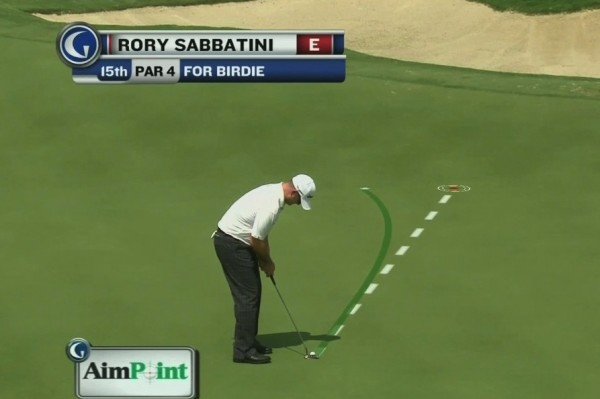






















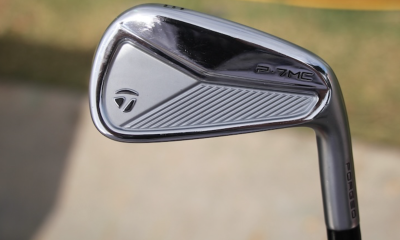

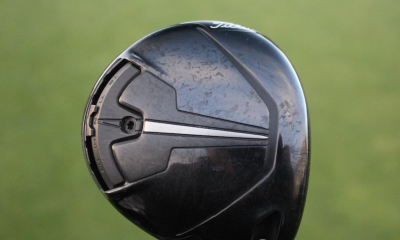



???????????
Jun 16, 2014 at 12:38 am
I concur with the many suggestions you might have travelling to this post. They may be incredibly persuading and might absolutely perform. Even so, a threads are certainly brief for starters. May perhaps you desire increase these people somewhat coming from next time? Thanks for the actual article.
Tom Gillis
Jun 10, 2014 at 7:54 pm
It works.. Gillisgolf.com
dave b.
Apr 17, 2014 at 1:26 pm
There might be one or two other items in the running, but the basic AimPoint class I took last year is solidly top-3 in the best-money-I-ever-spent-on-golf-instruction category.
After a 3-year layoff from golf (newborn) my putting skill and touch was gone. I got a long-overdue putter fitting (which helped some) then I took the AimPoint single-break class and it changed my putting nearly overnight. Skills I have now that I didn’t before: I *always* know which way it will break — don’t laugh, I used to just read the break wrong (visually) A LOT!. I also know the distance of my putts down to the foot, know whether the putt is breaking a little vs. a lot, and a good idea of the stimps without a stimp meter or anything weird, just using the chart. I now make everything up to 5-feet pretty easily and if I leave 20-30 footers they are tap-ins.
One fo the more intangible things is that by following the charts, and seeing putts drop, it helped me get back a bit more of that intrinsic “feel” for the right capture speed. It’s hard to describe the feeling but I’m not trying to “die” the ball into the cup anymore, and I don’t often run it 6-feet (or more!) past the hole.
Don’t get me wrong, I still miss putts and make bad reads, but at least I’m in the ballpark much more with my misses than I used to. I make a high percentage of 10-15 footers now, where in the past those were almost automatic misses.
About the speed of play stuff: It has been a full season since I started with AimPoint and I often forget to even get out the chart book especially if I’m playing my home course — I would be even more accurate if I did use it, probably. When I do use the chart I glance at it once or twice per round (usually for putts in 15-20 foot territory). I would definitely bring the charts along on a new course where the stimp is way different from my home course. My playing partners have no idea what I’m doing — I stroll around on the green and look at lines, I plumb-bob a little, then drain it (usually). The other guys take longer than me, and then they usually miss.
I didn’t intend to write a book here, but I wanted to give real-world feedback. I am super happy with the results. It was a bit to choke down the price of the class, but honestly I have to admit it was well worth the expense. I would however not really recommend any of their other courses that talk about double-breakers or 50-foot lag putts. The statistical averages on those putts are so low, that I don’t think any kind of systematic practice will make a measurable difference, and surely not worth an additional $200 or whatever. Up to 20-feet, definitely. This isn’t my opinion, Dave Pelz’s research and Every Shot Counts both detail the statistics that beyond 20 or 30 feet, you will miss, Pro or not.
r
Dec 20, 2013 at 3:58 pm
you still have to read the break.
John
Feb 11, 2014 at 2:54 pm
The AimPoint charts give you the amount of break for a distance, slope and Stimp.
Dan
Aug 31, 2013 at 7:46 pm
Unfortunately instructors are limited in florida of all places. Most if not all are in Orlando. Disappointed
Pingback: Why AimPoint Will Save Your Putting: A Basic Introduction | JR's site
Scott Yurgalevicz
Mar 1, 2013 at 11:20 pm
Golfzalo,
check out the aimpoint website. They have instructors world wide. http://aimpointgolf.com/instructors.asp
Golfzalo
Mar 2, 2013 at 7:11 am
Not in Chile, not even in South America 😛
Golfzalo
Mar 1, 2013 at 9:52 pm
What happen if I don’t live in the States, so I can’t get formal instruction. I can’t use the method? Is there an online tutorial?
Jack
Mar 1, 2013 at 11:34 am
Scott-
Is an Aimpoint lesson with an instructor basically the same as going to one of the clinics?
Scott Yurgalevicz
Mar 1, 2013 at 12:53 pm
Jack,
I would say yes. I would recommend attending a clinic though mostly due to other golfers having questions that you may not think of. You’ll end up with a well rounded grasp of AimPoint.
Scott Yurgalevicz
Feb 28, 2013 at 9:07 am
The one thing I love about AimPoint is that it got me it had me “feeling” the break using my feet and not my eyes. Sometimes our eyes deceive us and thus plumb-bobbing isn’t always the most accurate option. My experience with AimPoint also showed me that this method is actually easier to use for older golfers whose vision is waning because it puts an importance on feel not sight.
Steve
Feb 28, 2013 at 8:12 am
I cannot figure out how this ‘system’ (don’t you guys just love that word?) can do anything that plumb- bobbing and some practice won’t do.
RoyD
Apr 21, 2014 at 12:05 pm
That’s because plumb-bobbing doesn’t do ANYTHING. It’s a total waste of time and effort. Why do you think NO tour guys do it? Geeze…
spuddy09
Feb 28, 2013 at 12:35 am
I won my first Club competition last weekend shooting a 73. My handicap was 7. I’m now a 6. I spent 2 hrs with Mark Sweeney last December and learned the Aimpoint method. I went out and mapped all the greens on my home course, using a Breakmaster. The results have been good. No 3 putts in the last 10 rounds.
Dave
Feb 27, 2013 at 6:50 pm
Sadly, AimPoint is a major contributor to the mind numbingly slow pace of play which has become the norm in the professional game. I think Scott McCarron was one of the first to use it.
Slow play is killing the game, allow AimPoint for practice but it should not be allowed for tournament play.
Scott Yurgalevicz
Feb 27, 2013 at 7:36 pm
Hi Dave thanks for the input. I couldn’t agree more that professional golfers are painfully slow. I feel like a lot of that stems from not playing ready golf. Like I said before, I’m reading my putt even before I get to the green. I have about half of my aimpoint info by the time I get to my ball. If you practice finding the other variables it should take no more than 15-20 secs to determine your read. So yes pro golfers are slow but aimpoint has nothing to do with it.
David
Sep 1, 2016 at 10:16 pm
Hmmm, I don’t think creating a “No Aimpoint allowed” rule would go over very well. You might as well create a rule for no stepping on the green, and no thinking.
Jeff
Feb 27, 2013 at 4:50 pm
Very interesting read. Two questions. 1). How would this impact pace of play? Some people already play at a paralytic pace. 2). Is this “calculator” legal in USGA sanctioned events?
Scott Yurgalevicz
Feb 27, 2013 at 5:09 pm
Jeff those were my first thoughts as well but golfs governing bodies have approved the chart as seen above. In terms of pace of play it really doesn’t influence it. Like anything else if you do this repetitively it becomes second nature. In fact before reaching the green I’m already aim pointing to streamline the process.
Jim
Feb 27, 2013 at 2:02 pm
This is well wort the investment. I went to the one clinic and once they start putting lines down and those balls start breaking the exact way they predict its nuts. Instant believer. The one they showed us a 50+ footer and asked everyone which way it broke. Answered ranged from 5 feet left to 5 feet right. His answer was right at the hole. Nobody could believe it. So we all got up there, aimed at the hole and that putt moved left and right and left and right and lipped out. It was amazing.
Taylor
Feb 26, 2013 at 11:13 pm
Aimpoint totally changed how I now see and read greens. A lot of the time you don’t even have to use the chart, especially if others in your group putt before you do. It is definitely the best money I’ve spent in golf. It does require practice to not only get good, but to get fast at reading greens. But that is like any other skill in that the more you practice the better you get. That being said, it has taken a weakness of my game and now made it a strength.
Nick
Feb 26, 2013 at 9:45 am
I was a terrible lag putter before aim point. While Aimpoint focuses on 20 feet and in, and really shines at the 10-15 foot mark, just learning a more objective green reading process has made me a much better putter. It has given me the confidence in my read to make a more confident putting stroke. I would say I hole 2 putts a round that I would not have made before aim point and certainly roll many more to tap in distance as opposed to the knee knocking 3 foot mark which is probably another stroke saved through three put avoidance.
The only complaint is that the charts are involved and while you get adept at using them quickly, pulling out your chart can feel goofy and you’ll be tempted to either attempt to memorize it (a daunting task) or to go without it and use approximations (which robs the system of much of its effectivenesss). A serious devotee would want to memorize the chart as much as possible and pull it out only when uncertain. Not there yet but a big fan of Aimpoint.
dan neal
Feb 25, 2013 at 6:02 pm
Dave, I think #3 is this…If you look at the picture of Sabbatini, imagine a line straight to the hole from the ball, then you see the white dotted line that runs straight from the ball PAST THE TOP OF THE BREAK of the putt. You figure the degree of angle between the two. That is my best guess.
Dave Smith
Feb 25, 2013 at 5:32 pm
Can you explian # 3 better
Scott Yurgalevicz
Feb 25, 2013 at 6:20 pm
Not a problem Dave. #3 is a bit tricky to explain but let me try in a different way.
Lets talk about a 10 foot one plane putt. For this scenario a one plane putt will have a ZERO LINE. If you were to walk in a complete circle around the hole maintaining a 10 foot radius there would be 2 points on that circle that you can putt directly at the hole and the ball will go in (as long at all the other parameters are met).
Once you determine where the nearest “zero” point is to your ball on that radius, you simply make an educated guess at how many degrees away you are from it.
The Aimpoint chart works in 15 degree increments (notice the bulls-eye looking picture above).
Keep in mind, we are just trying our best to get as close to each variable as possible. So when we “AimPoint” we are merely giving ourselves a greater opportunity to make each putt.
Let me know if this way is easier to understand. I prefer the Zero Line but the “Mid-Point” Method is equally as popular. Another way of explaining the Mid-Point method is; if you take the same 10 foot putt, walk on a straight line towards the hole and stop half way and place your feet close together. From here use your feet and begin to rotate until you find the direction of the slope that would force you to lean perfectly straight forward and not slightly left or right. From there how many degrees away from your ball are you facing. (this Youtube video I found my help: http://www.youtube.com/watch?v=fj6R-_wfKdo)
Hope this helps
Nick
Feb 26, 2013 at 9:57 am
The “zero line” is really just a technical term for straight up hill. As Scott already said, that putt would go in if you putt it right at the hole from two positions, directly below or above. While Scott says its simple, its actually a suprisingly difficult skill that requires practice for aim point to work. Course engineers are great at making optical illusions that confuse the player as to where directly up hill is for their putt. As Scott said, a bubble level can be used to verify if the player has properly identified the zero line and can be used as a training aid when learning the system. Like anything else, aim point requires practice to learn and apply properly on the course but I can attest that if you are like me and have a “system” of reading putts that is fairly ad-hoc and subjective, applying the more structured and objective approach advocated in the aimpoint clinics and literature can be a big boost to your game.
I swear I am not paid to say this crap by Aim point. In fact they have 200 bucks of my money but they can keep it. The system has worked for me.
Jim
Feb 26, 2013 at 1:49 pm
First, AimPoint is ALLOT easier to use after formal instruction and a bit of practice. Relax cause you don’t have to be a surveyor or physics whiz to take full advantage of the process either. It’s pure physics, there’s a margin for error, it’s simple to use, it definitely works.
Second, the AimPoint pocket charts are simple and calibrated as a clock face accounting for Stemp, slope, and ideal ball speed of rolling the ball about 6″ past the cup on all putts. Determine the degree of angle of your putt line directly from the ball straight to the hole. then the angle of that line to vertical line line through the cup; apply the Stemp and slope values; a quick look at the chart a you’ve got your firing solution. Unless there’s multiple slopes involved I can often read a putt in detail at my first glance of the green or in less than a minute. Trust me, if I can learn to do that anyone can.
As for point 3: AimPoint slope is actually one of TWO things. A) A measure expressed as a “PERCENTAGE of Fall” defined as a Zero Break Line, or a surface upon which a ball will roll straight and true between the an ultimate high point of a green surface and ultimate green low point. A green may have multiple Zero Break Lines divided by high areas or crowns / shoulders in the surface. This is your first tip as to which way the overal green area really tilts or slopes. B) A “Fall Line” is a perfectly up and downhill line through a GIVEN cup also expressed as a percentage of slope relative to the horizontal. The Fall Line MAY be at differing slpe angle relative to an absolute downhill zero break line. C) The putts Approach Angle is the degree a ball approaches a given cup relative to that cups Fall Line.
Imagine a clock face with the cup at the center. (See the chart pic in the article) The fall line ALWAYS runs from 6 – 12 or dead up & down slope. If your ball is approaching the cup from 3 or 9 o’clock you are 90* to the Fall Line or slope; at 11:00 or 1:30 you’re at 15* to the Fall Line, etc., all the way around the clock face. Given the variables the charts are calibrated to account for the impact of gravity on a golf ball to provide the break in inches. Aim that far outside the hole, control the speed and prepare to be shocked at how many putts you can make plus how many misreads you’ve been making.
Take my word for it that AimPint definitely works if you’ll spend the time / effort to become proficient. Usually approx. 2 weeks. It also works great for chipping and improving our overall course knowledge. If you can’t make more putts with AimPoint you’re a hopeless basket case. As an alternative I suggest knitting. Hope this helps a little.
Scott Yurgalevicz
Feb 26, 2013 at 2:00 pm
Hey Jim – thanks for the comments! You are 100% correct that AimPoint is much easier with formal instruction. In an attempt to keep the article short I decided to give the readers digest version to introduce people to Aimpoint and maybe propel them to go get a lesson or attend a clinic(I could have went on for a few thousand words but who would read that?) Thanks for taking the time dive a little deeper into it, you clearly know your stuff!
Brad
Aug 19, 2013 at 11:41 am
The average golfer utilizes 42% of his strokes putting. Average score of 90. Average putts of 38. Knowing these correct numbers is likely to help your cause.